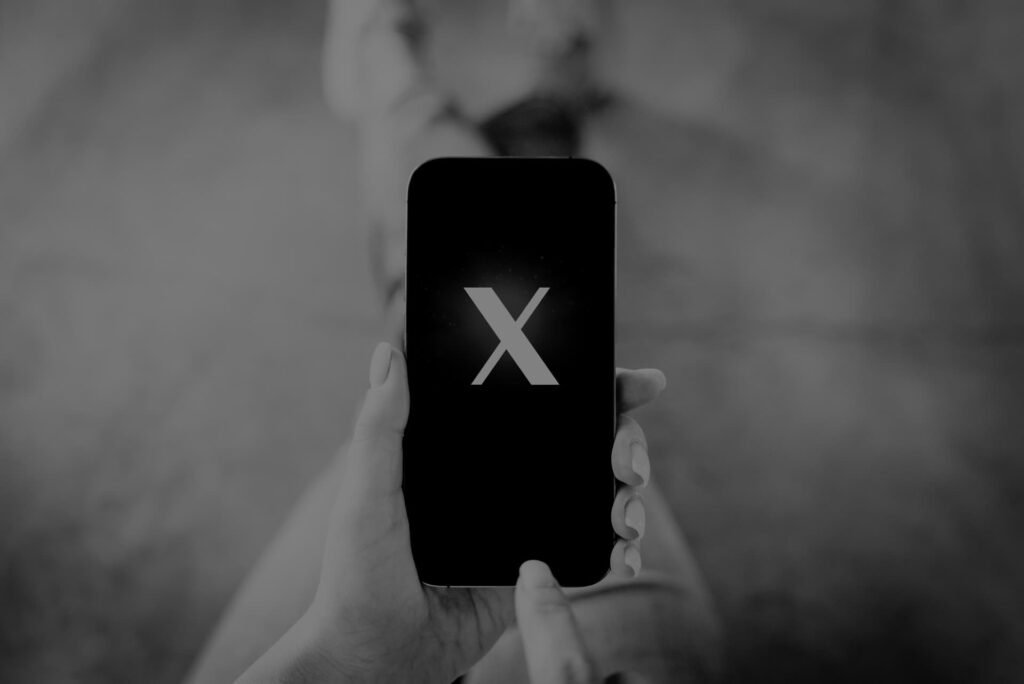This analysis is based on verified industry data from multiple authoritative sources, including the CMO Survey by Duke University, Gartner’s 2025 CMO Spend Survey, and industry reports from Statista and leading research firms.
The social media marketing landscape is undergoing significant structural changes as brands navigate economic uncertainty, evolving platform dynamics, and shifting consumer behaviour. Understanding how to allocate budgets strategically across platforms, content types, and marketing objectives has become critical for sustainable growth.
After analyzing current industry data and budget allocation patterns from major research surveys, clear trends emerge about where successful brands are investing their social media dollars and, more importantly, how to structure these investments for maximum return in 2025.
The current state of social media budgets
Marketing budgets overall have stabilized at 7.7% of company revenue in 2025, unchanged from 2024, according to Gartner’s 2025 CMO Spend Survey. This represents a plateau after two years of post-pandemic budget declines, but many CMOs still report having insufficient budget to execute their strategies. Specifically, according to a Gartner report, 59% of CMOs lack adequate funding for their strategic initiatives.
Within these constrained marketing budgets, social media commands significant attention. U.S. companies allocate an average of 12.1% of their marketing budgets to social media, according to Statista’s September 2024 survey, with projections indicating this could reach over 19% within five years. However, the reality of social media budget growth proves more complex than these projections suggest.
The CMO Survey from Duke University reveals a more nuanced reality. Social media spending increased just 1% over the last six months to 12.1% of the marketing budget in Fall 2024, showing more modest growth than projected. The survey notes that social media spending projections are consistently inflated, with five-year projections averaging 66% higher than current levels, but these targets are rarely met in practice.
This disconnect between projected and actual spending highlights the practical challenges of allocating a social media budget. Platform algorithm changes, rising advertising costs, increased complexity in content production, and measurement difficulties all constrain growth despite strategic intentions. The CMO Survey’s decade of research shows that when comparing predicted spending rates one year out to actual spending rates in the following year, projected levels were met or exceeded only once.
Economic pressures are reshaping allocation strategies
Current economic conditions significantly impact social media budget decisions. Nearly half (48.7%) of marketing leaders report that inflationary pressures are forcing them to decrease marketing spending levels, representing the highest percentage recorded in the past year. This economic pressure represents a notable increase from 45.1% in Fall 2023 and 45% in Spring 2024, reflecting continuing concerns about inflation and market uncertainty.
These pressures vary significantly across different industries and business models. Product companies report 52.4% pressure to decrease spending compared to 43.5% for service companies. Consumer Packaged Goods companies face the highest pressure at 66.7%, followed by Communications and Media at 77.8%, and Energy sector companies at 55.6%. Companies that sell to government entities also report more pressure to decrease marketing spending at 52.5% compared to those that do not at 45.2%.
This economic environment is driving more strategic, ROI-focused allocation decisions. Gartner reports that paid media continues to dominate marketing spend at 30% of budgets, as CMOs prioritize measurable, performance-driven investments over harder-to-measure brand-building activities. This represents an increase from about 28% last year, while spending on marketing technology, labour, and agencies all declined.
Digital marketing growth within social media
Despite overall budget constraints, digital marketing spending continues to grow within the marketing mix. The CMO Survey shows digital marketing spending increased 11.1% with marketers predicting 12.7% growth over the next 12 months. This growth represents a continuation of the digital transformation that has accelerated since the pandemic, though at a more measured pace than in previous years.
Within digital channels, WordStream reports that businesses allocate an average of 14.9% of their marketing budget to social media, while social media makes up 33% of all digital ad spending. Global social media advertising spending reached over $220 billion by the end of 2024, representing substantial growth from previous years. However, this growth comes with challenges, as 15% of the average business’s website traffic originates from paid search, while paid social traffic accounts for only 5% of overall website traffic.
The shift toward digital is accelerating the decline of traditional media, although it is not eliminating it. For the first time in two years, traditional advertising spending showed positive growth at 0.8%, but this represents only the fourth positive reading in a decade, according to the CMO Survey data. This suggests that while digital dominates growth, traditional media maintains a role in comprehensive marketing strategies, particularly for specific demographics and industries.
Platform-specific budget allocation patterns
Facebook and Instagram continue capturing the largest share of social media budgets, with Digiday’s 2025 CMO Strategies survey showing marketers still spending the most significant portions of their social media budgets on Meta’s platforms, consistent with 2024 patterns. However, this concentration creates strategic risks that more sophisticated marketers are beginning to address through diversification strategies.
Instagram maintains its position as marketers’ top choice for both branding, with 56% of survey respondents choosing it, and conversions, making 2025 the third consecutive year Instagram dominated social media platform rankings. Instagram’s effectiveness stems from its focus on visual content, sophisticated advertising tools, and an engaged user base that demonstrates higher conversion intent compared to other platforms.
Facebook faces different challenges despite being part of the same company ecosystem. Only 12% of marketers consider it best for branding, down one percentage point from 2024. Several factors hinder Facebook’s effectiveness as a branding tool, including the oversaturation of ads, limited customization options for brand pages, and challenges to brand safety. However, Facebook remains valuable for its sophisticated targeting capabilities and large user base, particularly for reaching older demographics.
Digiday’s survey reveals that marketers are diversifying platform usage in 2025, with the top five social media platforms maintaining the same ranking order as 2024: Instagram, Facebook, YouTube, TikTok, and Pinterest. However, marketers are allocating smaller portions of their budgets to each platform in 2025 compared to 2024, suggesting a strategic shift toward diversification rather than platform concentration. This change reflects the growing awareness of platform dependency risks and algorithm volatility, which can dramatically impact performance.
Additionally, Digiday found that marketers increased their use of other media channels in 2025, while they decreased their use of social media overall. For example, 79% of survey respondents said their company uses display ads for marketing in 2025, up from 75% in 2024. Conversely, 92% of survey respondents said their company uses social media for marketing in 2025, down from 97% in 2024.
While established platforms dominate current spending, smart budget allocation includes experimental investments in emerging channels. Pinterest shows strong potential with 1.3 billion monthly visits in March 2024, making it one of the most-visited websites on the internet and the second-most-visited social media website in the U.S. About 80% of weekly users have found a new brand or product on the platform, while 25% of all social media users wish more brands used Pinterest, with this number rising to 31% among Gen Z.
Reddit’s growth trajectory marks its value as a niche marketing opportunity, with $315 million in advertising revenue in Q3 2024, representing a 56% increase from the previous year. In January 2025 alone, Reddit was visited 3.8 billion times from desktop and mobile, with more than 50% of Reddit’s website traffic coming from the United States. However, Reddit’s users demand authenticity and meaningful contributions to discussions, rather than promotional content, which requires brands to practice social listening and contribute meaningfully to conversations.
Industry-specific allocation strategies
The CMO Survey data reveal significant differences in social media budget allocation between business models, reflecting varying customer acquisition strategies, sales cycle lengths, and platform effectiveness for different audience types. B2B companies currently show more conservative allocation compared to their B2C counterparts, though this varies by specific business model and industry sector.
B2B Product companies allocate 7.9% of their marketing budget to social media currently, with projections to reach 10.4% within one year and 15.6% within five years. B2B Services companies show a higher current allocation at 10.6% of marketing budget, projecting growth to 12.5% within one year and 17.5% within five years. This difference reflects the relationship-building nature of services marketing and the longer sales cycles typical in B2B services.
B2C companies show significantly higher allocation levels across both product and service categories. B2C Product companies allocate 18.6% of their marketing budget to social media currently, with projections to reach 20.9% within one year and 25.2% within five years. B2C Services companies allocate 12.0% currently, projecting growth to 14.2% within one year and 18.8% within five years. The higher allocation in B2C Product companies reflects the visual nature of many consumer products and the effectiveness of social media for driving direct purchasing decisions.
Larger companies tend to spend smaller percentages of revenue on marketing than smaller companies. Mid-sized firms with $100 million to $1 billion in revenue often invest 7% to 10% in marketing, while small businesses under $10 million might invest 12% to 15% or more to establish their brand presence. This scaling effect reflects the different growth needs and established market presence of companies at various stages of development.
Within social media specifically, the CMO Survey shows that pure-play online companies with 100% online sales allocate higher percentages to social media compared to brick-and-mortar businesses. This difference stems from direct revenue attribution capabilities and the natural alignment between digital sales channels and digital marketing platforms. Companies with mixed online and offline sales typically fall somewhere between these extremes based on their specific sales mix.
Content and paid advertising balance
Video content continues growing in importance, with 78% of people preferring to learn about new products through short video content and 93% of marketers reporting they’ll spend more time on social marketing in 2025. This trend toward video-first content strategies necessitates a significant reallocation of budget from static content creation to more complex video production workflows.
However, content creation requires significant upfront investment that many brands underestimate when shifting budget allocation toward content-heavy strategies. Professional video production typically demands substantial equipment, software, and talent costs. Successful video strategies require not just production capabilities but also platform-specific optimization, as each social media platform has different video format requirements, audience expectations, and algorithm preferences.
The challenge extends beyond production to distribution and amplification. While organic video content can achieve higher reach than static posts, the volume of video content across platforms has increased dramatically, making it harder to gain organic visibility without paid amplification. This creates a compound budget requirement where content production costs must be paired with paid distribution costs to achieve meaningful reach and engagement.
While paid social advertising remains essential for most brands, rising costs are pressuring ROI calculations. WordStream data shows that only 5% of overall website traffic comes from paid social, compared to 15% from paid search, raising questions about the relative efficiency of investment. This disparity highlights the challenge of justifying social media advertising spend when direct traffic generation metrics favour other digital channels.
The challenge is compounded by iOS privacy changes and increasing competition for ad inventory, which have pushed costs higher while reducing targeting effectiveness. Many brands are finding that their cost per acquisition through social media advertising has increased significantly, forcing them to either accept lower ROI or shift budget toward platforms and strategies with more predictable performance metrics.
AI and automation impact on budgets
AI adoption in marketing has reached 88%, with 83% of marketers reporting increased efficiency and 84% noting faster content delivery. The CMO Survey shows AI use in marketing activities has risen from 8.6% in Fall 2022 to 13.1% currently, with projections suggesting usage will reach 34.5% within three years, representing a growth rate of 163.4%.
Generative AI shows remarkably rapid adoption, with the CMO Survey indicating usage for 11.1% of all marketing activities, up from 7.0% in Spring 2024, representing a 59% jump in just six months. Adoption is highest in B2B Services companies, which use generative AI for 16.7% of marketing activities, and B2B Product companies at 11.7%. Tech and Software companies lead adoption at 22.8% of marketing activities, while Professional Services firms follow at 18.4%.
AI improvements are delivering tangible benefits that impact budget efficiency. Sales productivity improved 6.6% in Fall 2024, up from 5.1% in Spring 2024, while customer satisfaction increased 6.3% versus 6.1% previously. Marketing overhead costs decreased 8.9% compared to 7.0% in Spring 2024, showing accelerating efficiency gains.
These efficiency gains allow brands to achieve more with constrained budgets, but require investment in AI tools and team training that should be factored into allocation planning. The CMO Survey shows that marketers rate AI’s impact on freeing their time for strategic projects at 3.0 on a scale of 1 to 7, increasing from 2.4 just six months ago. Companies with 100% online sales benefit more from AI for strategic time allocation compared to brick-and-mortar companies, suggesting that digital-native businesses may see faster returns on AI investments.
Influencer marketing budget considerations
Influencer marketing continues growing, projected to reach $32.55 billion in global spend by the end of 2025. However, Statista data shows significant variation in allocation approaches, with 22.4% of respondents investing 10% to 20% of their marketing budget in influencer marketing. In comparison, 26% devote more than 40% of their budget to this strategy.
The evolution toward micro and nano-influencers continues to reshape budget allocation within the influencer marketing industry. These creators, with smaller but more engaged audiences, consistently deliver higher engagement and conversion rates compared to macro-influencers, while incurring significantly lower costs per post. This trend drives budget allocation toward larger networks of smaller creators rather than celebrity partnerships, but requires more complex relationship management and campaign coordination.
The global Instagram influencer market size stood at $17.4 billion in 2023 and was projected to surpass $22 billion by 2025, according to Statista data. This growth reflects both the platform’s continued dominance in influencer marketing and the overall expansion of creator economy investments. However, the effectiveness of influencer marketing varies significantly by industry, target demographic, and campaign objectives, necessitating careful budget allocation based on specific business goals rather than relying on industry trends.
Measurement and attribution challenges
Brands using advanced attribution report that social media influences 43% of total conversions, even when it’s not the final conversion touchpoint. This multi-touch attribution reveals social media’s broader impact on the customer journey but complicates budget allocation decisions by making direct ROI calculations more complex.
The CMO Survey shows that short-term marketing impact is proven quantitatively by 54.6% of companies, while long-term impact is proven quantitatively by only 41.8%. This measurement gap creates bias toward immediately measurable channels and potentially undervalues brand-building social media activities that contribute to long-term customer value but may not drive immediate conversions.
The challenge extends to platform-specific measurement capabilities. Different social media platforms offer varying levels of attribution and analytics sophistication, making it challenging to compare performance across channels accurately. This measurement inconsistency complicates budget allocation decisions and may lead to over-investment in platforms with better measurement tools rather than those delivering superior actual results.
Companies are responding to these measurement challenges through increased experimentation, though the CMO Survey shows a slight decline in experimental approaches. In Fall 2024, companies performed experiments to understand marketing impact 34.8% of the time, down slightly from previous periods. B2C companies use experimentation more frequently than B2B companies, with Consumer Services leading at 55.5% and Transportation at 49.0%.
Budget allocation recommendations for 2025
Based on current industry data and economic conditions, strategic social media budget allocation requires balancing proven performance with strategic experimentation while maintaining the flexibility to adapt to changing economic conditions and platform updates. The framework should reflect both current market realities and the need for sustainable growth despite budget constraints.
Core allocation should prioritize paid advertising across platforms while implementing diversification to reduce dependency risk. Meta platforms should represent no more than 60% of paid advertising budget, despite their current dominance, to protect against algorithm changes and platform policy shifts. TikTok merits an allocation of 20% to 25% for brands targeting younger demographics, although regulatory uncertainty necessitates contingency planning. LinkedIn deserves 15% to 25% for B2B companies, reflecting its unique professional audience and higher conversion rates for business-focused content.
Content creation and production should account for 25% to 35% of the allocation, recognizing the investment required for video-first strategies and platform-specific content needs. This allocation must account for both production costs and the ongoing expense of maintaining content quality and consistency across multiple platforms. The investment should prioritize video content, given its superior performance metrics; however, brands must strike a balance between quality and volume to maintain audience engagement.
Community management and engagement deserve an allocation of 15% to 25%, particularly during economic uncertainty, when retention becomes more cost-effective than acquisition. The CMO Survey shows companies currently spend 19.6% more on customer acquisition than retention, but this balance may need adjustment during continued economic uncertainty. Community management delivers long-term value through the development of customer relationships and brand advocacy.
Influencer partnerships should receive 5an allocation of 5% to 10% with a focus on micro-influencer networks rather than individual celebrity partnerships. This approach provides better ROI while reducing dependency on individual creators whose audience engagement may fluctuate. The allocation should prioritize long-term partnerships over one-off campaigns to foster authentic relationships and maintain a consistent messaging strategy.
Economic uncertainty necessitates adapting to maintain budget flexibility, allowing for a shift between acquisition and retention focus based on market conditions. Brands should reserve 10% to 15% of social media budget for rapid reallocation based on performance data and market changes. This flexibility allows response to economic shifts, platform algorithm changes, and competitive dynamics without requiring complete strategy overhauls.
Industry-specific modifications recognize that B2B companies should allocate higher percentages to LinkedIn and content creation, reflecting longer sales cycles and relationship-building requirements inherent in business-to-business sales processes. B2C companies can justify higher overall social media allocation, particularly for e-commerce brands with direct attribution capabilities that can measure immediate ROI from social media investments.
Small businesses may need to concentrate spending on fewer platforms to achieve meaningful impact, while larger enterprises can afford diversified platform strategies that spread risk and opportunity across multiple channels. The key insight from current industry data is that successful social media budget allocation requires balancing proven performance with strategic experimentation, while maintaining flexibility to adapt to changing conditions.
The brands succeeding in 2025 are those making data-driven allocation decisions based on actual performance, rather than projected growth rates that have historically proven optimistic. They prioritize sustainable growth over rapid expansion, invest in measurement capabilities that provide actionable insights, and maintain strategic flexibility to adapt their approach as market conditions evolve.
Sources: CMO Survey Fall 2024 by Duke University Fuqua School of Business, Gartner 2025 CMO Spend Survey, Statista Social Media Marketing Reports, WordStream Digital Marketing Statistics, Sprout Social State of Social Media, Digiday CMO Strategies Survey




